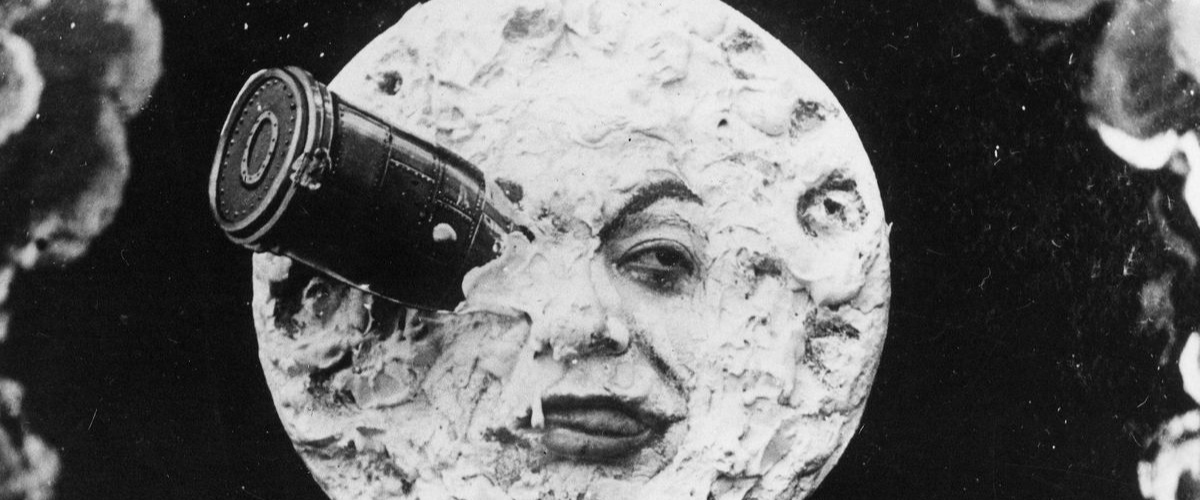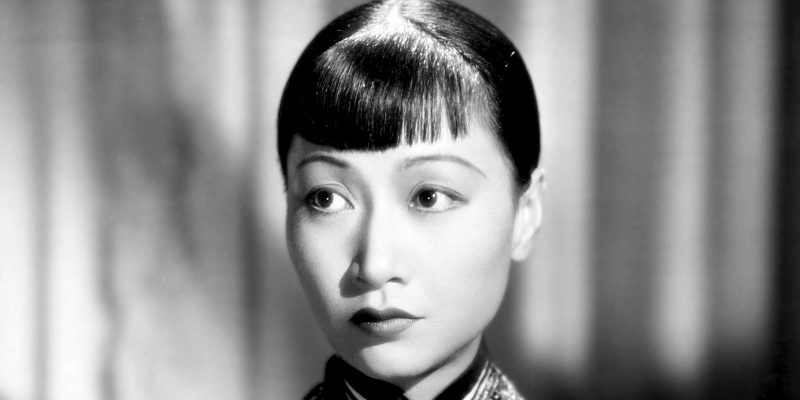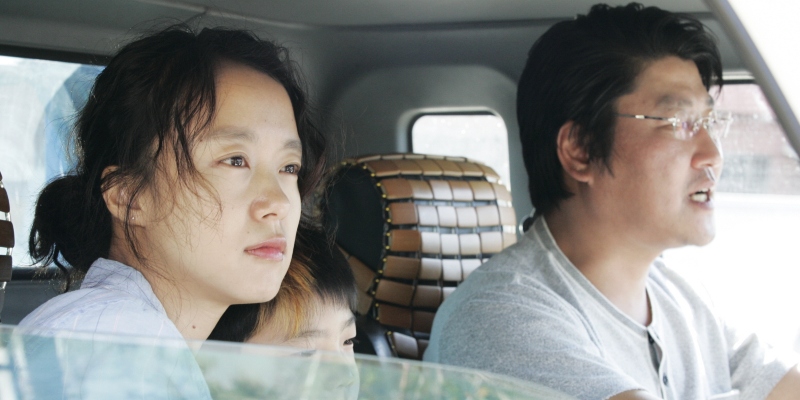
The Poetics of Film: Four Poets on How Cinema Influences Their Work
On Dracula, Anna May Wong, Secret Sunshine, and “Horror Poetry”
Whether seen as adults or children, for pleasure or research, films can be as formative for a writer as any literary text. They can shape our aesthetics, our relationship with language, and can provide a sense of lineage. They can awaken our civic consciousness, and help us to see and be seen. In this roundtable, which originally took place at the 2022 AWP Conference, four poets explore how the cinematic world has informed their poetic one, and how films have inspired their craft, identity, and passion for the cross-pollination of artistic mediums.
–Christopher Kondrich
Sara Eliza Johnson on Poetry, Trauma, and the Aesthetics of Horror
I’ve loved horror films since I was a kid. But it was only after I started working on an essay collection about my relationship with horror and horror films, and their relationship to my own traumatic memories, that I realized how much cinema has also influenced my poetry practice. I’ve now come to terms with the fact that what I’m writing, is, to some extent, “horror poetry.”
I find myself gravitating towards horror for inspiration in my poetry writing, in addition to my nonfiction writing, not just because of its thematic resonances, but also because that resonance is often tied up in the visual viscerality of horror. The thematic heart of horror is trauma, so it only makes sense that I gravitated back to it. And the primary metaphorical language of horror cinema is the visceral moving image. The movement of the image is important because it facilitates the metaphorical transformation.
And this has been integral for me. As I’ve started to work with trauma in my poetry more consciously, the primary language of my poetry has become the visceral moving image. In sum, watching so much horror led to a symbiotic relationship between my work and the horror film that I believe shows the potential for horror cinema as a lens when “writing trauma,” which I think shows the potential for greater relationships between poetry and film more broadly.
A cinematic scene is orchestrated in a way that is useful for poets to study if they want their poems to have complex and dynamic movement on the page, to switch perspectives or angles, to work through shifts in psychology. For example, in a slasher scene, you might take on multiple roles in the scene based on the camera’s view, moving from both perpetrator to victim and observer perspectives. In a body horror scene, you might enter the inside of the body, then move back out. Cinema often also works with montage and floating fragments, which is useful for poetry (or, at least, has been for mine).
I’ve now come to terms with the fact that what I’m writing, is, to some extent, “horror poetry.”
It took me some time to understand this development in my own work. I didn’t realize how often I was writing about bodies being torn apart, reconstituted, torn apart again, and annihilated, or how often wounds became the central point of emotional and metaphorical pressure in my poems. An important note here is that my book doesn’t deal with bodily annihilation in itself, but the sensation of annihilation that trauma can engender for a person. And my quest was to create that sensation, not only engage with a concept, and this is one realm in which horror cinema has helped me.
Overall, horror or not, the multimodal complexity of film has been immensely helpful for me for thinking through the dynamic movement of the poem’s “bodily” presence on the page, and in helping me develop the materiality of poetic language, which has been essential for me when trying to develop emotional and psychological intensity in my poetry.
*

Chase Berggrun on Erasing Dracula
My book, R E D (Birds LLC, 2018), is a full-length erasure of Bram Stoker’s Victorian horror Dracula. Each of the collection’s 27 poems, corresponding to Dracula’s 27 chapters, is composed exclusively of language sourced sequentially from the novel: no words were changed, added, or otherwise manipulated, only deleted; then relineated on the page into a more recognizable poetic shape.
R E D is an original story, unrelated to Dracula, of violence, sexual abuse, power dynamics, vengeance, and feminist rage, and wrestles with the complexities of gender, transition, and monsterhood. It features an unnamed narrator, who contends with her relationship to herself and her body, as well as an abusive husband, over the course of the book, ending in a climactic scene of revenge and resolution.
Erasing Dracula was a long, arduous process of sifting through more than 160,000 words into what became a manuscript of 5,750. I decided that as I was working on the book, I was going to “watch every vampire movie,” an absurd and impossible commitment. Obviously, this plan failed—but I did, in fact, get through quite a lot of them.
Watching all these films made me think about why exactly it is that Dracula has been adapted to cinema so very many times since its publication in 1897, and my theory is, beyond the obvious attraction and popular captivation with vampires, that the narrative structure of Dracula is particularly suited to adaptation. The events of the book contribute to a ramping up of tension and dread—an introduction of the vampire in a spooky castle, mysterious events and deaths told of through interviews, journal entries, and news clippings, then the organization of an intrepid team, a montage of planning, an international hunt, and a final confrontation.
The narrative structure of Dracula is particularly suited to adaptation.
The cinematic arc of Dracula’s 27 chapters informed and constrained the structure of my erasure poems much more than I had anticipated. Without even intending to, the poems began to take on the pace, the arc, the urgency of Dracula, almost in parallel. Particularly vivid scenes from the novel offered their language to new and equally vivid moments in the poems, but in markedly different contexts.
For all its flaws, Dracula remains a massive tree in the grove of pop culture, growing new branches literally by the day. Swimming amongst its various iterations while creating a new story from the inside out was a fascinating and exciting process—one that very literally took place during my own transition—and what is gender if not an adaptation, however faithful or rebellious, of a preexisting script? The films I watched alongside the writing of R E D excited and enlarged my idea of the vampire and the limitless potential within the constraint of the various tropes, rules, and popular conceptions of that monster, and monstrosity in general.
*

Sally Wen Mao on the Agency of Chinese American Actress Anna May Wong
When the iconic Hollywood actress Anna May Wong arrived in Shanghai in February 1936 aboard the S. S. President Hoover, thousands of fans greeted her alongside reporters and her brother, James. At the time, Shanghai was near the tail end of its “Golden Age” and experiencing a period of intense growth and cosmopolitanism. While the West was experiencing a Great Depression, Shanghai was abuzz with glamour, art, and intrigue, even as the threat of civil war and foreign invasion loomed.
To the disappointment of the local Shanghai press, the 31-year-old Anna May Wong didn’t speak any Mandarin. She was the first Asian American internationally renowned movie star, born and raised in Los Angeles as a second-generation Chinese American of Taishanese descent. Though Anna May Wong’s whole film career in both America and Europe pushed her to “represent” China, she had never been to China before. She intended her visit to be geared toward education—to learn Mandarin and study the Chinese theater.
To be caught between two worlds, one of which rejected the other, how could one negotiate identity?
For many Chinese Americans, China can be a paradox: at once close, and at once far away. To some, it is hard to know whether visiting China is an arrival or a return. And in 1936, a time when the Chinese Exclusion Acts were still written into the laws of the United States, it was even more complicated for Anna May Wong. To be caught between two worlds, one of which rejected the other, how could one negotiate identity? In Wong’s account of her visit to China, she declared, “I am going to a strange country, and yet, in a way, I am going home.”
Chinese reporters, critics, and officials treated Anna May Wong with a mixture of interest and disdain. They decried the roles she had to play—in particular, the shame she caused the country playing evil stock characters in Hollywood that cast China in a mocking light. According to Anna May’s account of a reception in the Department of Cinematography in Nanjing hosted by the Kuomintang government, the Chinese officials “all took turns berating [her] for the roles [she] had played.” Yet, it was also clear that Anna May Wong had a reverence for China, a desire to understand it, to fully connect and engage, using her newfound knowledge to cement her future as an actress who will portray the real China.
Sartorially, Wong’s lack of belonging across America and China compelled her to assert a new identity for herself. In the footage from her initial journey to Shanghai on a boat, Anna May draped herself in a luxurious fur coat and donned a black wool hat. On the street, she wore a long qipao and black leather gloves, with a fox fur draped around her. She was a tourist, essentially—but in a sense, she was also observing the street scenes of Shanghai, taking on the role of a female flaneur and participating in its urban life with her movements and her style of dress. If Anna May Wong’s film roles expressed a series of stereotypes, a set of tragedies, or a lack of agency, then fashion has always been Anna May Wong’s assertion of her identity, her sense of connection to her culture, and consequently, her agency.
*

Christopher Kondrich on Secret Sunshine and the Failures of God
Is there a more profound betrayal than to be betrayed by God, to feel that God has betrayed you personally despite your devotion?
In Secret Sunshine, written and directed by Lee Chang-dong, Shin-ae, a single mother whose husband died before the film opens, whose son Jun is kidnapped, held for ransom, and found dead by a riverbank, decides she must visit her son’s killer in prison to deliver the news of her forgiveness, as well as the news of God’s love, a love she has found, or has convinced herself that she has found, in the wake of her son’s death. Expecting to find him in need of her forgiveness, she learns that God has already done so.
“God reached out to a sinner like me,” her son’s killer explains, completely at peace. “He made me kneel to repent my sins. And God has absolved me of them.”
I believed then, as I do now, that art must show us what we would rather not see, tell us what we’d rather not hear.
“God has forgiven your sins?” she asks, barely able to speak. Within Shin-ae’s question is the realization that God has betrayed her, that she has been deprived of her one opportunity to regain a sense of meaning and purpose in her life, as well as the incredulousness that someone who committed such a heinous act could be forgiven so easily.
In an interview with Dennis Lim for Film Comment, Lee Chang-dong explained that the question of what cinema is for is one he asks himself all the time. Several years ago, while watching Secret Sunshine for the first time, I asked myself the same question, though from the perspective of a parent already wracked with anxiety about the health and safety of his child. What is a film for when it depicts what we fear most? Why would I subject myself to this, I thought, which was then followed by the question why would I not?
I believed then, as I do now, that art must show us what we would rather not see, tell us what we’d rather not hear. If this was what I truly believed, rather than what I simply told myself I did, why would I turn away? I’ve also come to believe that art should explore why we’d rather not see or hear certain things. It wasn’t that I simply did not want to see violence befall a child, it was that I did not want to entertain the thought that my daughter was mortal.
I have difficulty believing in God, and often do not. Nevertheless, how could God do this to me—make my child mortal? The question, which Secret Sunshine prompted me to ask, compels me to write. “In short,” as Allen Grossman writes in his essay “My Caedmon, “the speaker in the poem is moved to begin speaking by the failure of God to make sense.”
*
Sara Eliza Johnson is the author of Bone Map, which won the National Poetry Series and was published by Milkweed Editions in 2014, and Vapor, which will be published by Milkweed Editions in 2022. Her work has been featured on Poetry Daily, Verse Daily, and the Academy of American Poets Poem-A-Day series. She is the recipient of numerous honors, including a NEA fellowship, a Rona Jaffe Foundation Writers’ Award, and currently teaches at the University of Alaska–Fairbanks.
Chase Berggrun is a trans woman poet and the author of R E D (Birds, LLC, 2018). Her poems and essays have appeared or are forthcoming in The Nation, Poetry Magazine, American Poetry Review, and elsewhere. She lives in New York City, where she works as a literary assistant to the poet Gerald Stern.
Sally Wen Mao is the author of Mad Honey Symposium (Alice James Books, 2014) and Oculus, published by Graywolf Press and a finalist for the Los Angeles Times Book Prize for Poetry. Her work has won a National Endowment for the Arts grant, a Pushcart Prize and an Amy Award from Poets & Writers. She was the 2015-2016 Singapore Creative Writing Residency Writer-in- Residence, a 2016-2017 Cullman Center Fellow at the New York Public Library, and the 2017-2018 Jenny McKean Moore Writer-in-Washington at the George Washington University. Currently she is the 2021 Shearing Fellow at the Black Mountain Institute in Las Vegas.
Christopher Kondrich
Christopher Kondrich is the author of Valuing (University of Georgia Press, 2019), a winner of the National Poetry Series, and Contrapuntal (Free Verse Editions, 2013). His poetry appears or is forthcoming in such venues as The Kenyon Review, New England Review, The New York Review of Books, The Paris Review, Ploughshares, and The Yale Review. He is a Visiting Assistant Professor at the College of the Holy Cross, and teaches in the low-residency MFA program at Eastern Oregon University.












